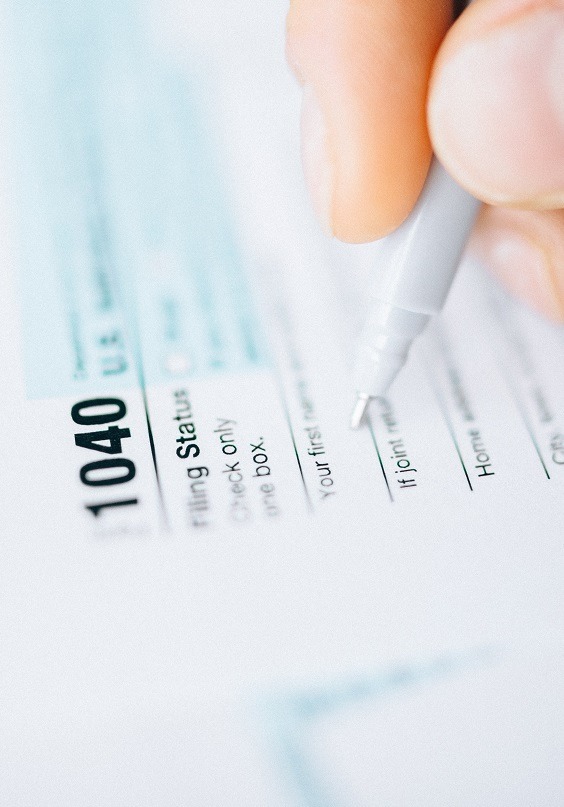
What’s the Status?
In 2020, the Biden administration announced an intention to limit the 1031 Exchange, which helps investors save on real estate taxes. Two years later, has there been any follow-through? If the limit occurs, 2022 could be the last year for investors to use a 1031 exchange for all it’s worth.
Here’s our update.
First, How Does a 1031 Exchange Work?
The 1031 exchange is named for Section 1031 of the United States Internal Revenue Code. It lets real estate investors defer taxes on their capital gains when they trade up to more expensive properties. Not surprisingly, many investors are glad to acquire increasingly valuable real estate, and this provision of federal tax law is quite popular. Somewhere between a tenth and a fifth of today’s commercial real estate was bought through Section 1031.
Selling one property to buy another would ordinarily mean capital gains tax on the first one. Deferring the capital gains hit gives the investor more money to spend on a replacement property. In theory, this is because the investor is trading the property for a more valuable one, rather than buying afresh, and thus shouldn’t have to cash out subject to capital gains tax.
Under IRS rules, the investor has to have an independent Qualified Intermediary (QI) carry out the transaction. (Exchange companies providing QI services are also known as accommodators.) The QI is responsible for:
- Drawing up a Section 1031 exchange agreement with the investor that directs the currently owned property to be transferred to, and then from, the QI.
- Locating potential properties to buy.
- Preparing transaction documents.
- Holding the sale proceeds for the replacement property purchase.
- Keeping every part of the process organized, timely, and IRS-compliant.
So, the QI sells the old investment property, holds the proceeds, then buys the new real estate on behalf of the investor out of the proceeds of the first property. Yet the new property is deeded directly to the investor.
The 1031 exchange is also known as a like-kind exchange, as the chosen replacement property (farm, single-unit residence, etc.) should match the type of property being sold. In any case, the properties have to be for business or rental, and can’t be primary or second personal homes. Once the first property is sold, an investor will get 45 days to find a new property to buy, and 180 days to get to closing and complete the transaction. The investor is not permitted to own both properties at the same time.
Investors may never deposit proceeds from the sale of the first property into their own accounts. At closing, the funds from the sale must go to the QI, who holds them in escrow until the replacement property can be purchased with those funds.
Several other rules apply. Professional guidance is necessary every step of the way. Even the most seasoned investors work closely with their tax experts to ensure compliant, tax-effective 1031 transactions. Need more details? See Like-Kind Exchanges – Real Estate Tax Tips, published by the IRS, for current information.
What’s Biden’s Beef With 1031 Tax Deferrals?
Why would the current administration want to curb the benefits of Section 1031? After all, a like-kind exchange doesn’t allow “tax-free” gains — the taxes are deferred.
That said, investors with savvy tax experts know how to avoid capital gains liability completely. They might also use this method to avoid another taxable element of investment real estate, known as depreciation recapture. Depreciation represents loss of value with age. It’s a certain fraction of the investment property’s value, which owners deduct from their annual taxes. When an investor sells the property for a price over the depreciated value, the owner may need to “recapture” the depreciation and pay taxes on it after all. So, tax experts might recommend the strategic use of like-kind exchanges to bypass the normal depreciation recapture.
Investor-owners can employ like-kind exchanges to keep selling one property into the next, accruing more and more real estate equity, while never having to declare a taxable gain. They can defer ‘til they drop! Then, their heirs benefit from a “step up” in cost basis, sell the latest property in the chain, and extinguish the tax liability.
Section 1031 is used by families with sprawling western tourist ranches and cattle farms and mineral rights. These are some of the country’s wealthiest land owners.
And, as noted by Bloomberg, Biden’s predecessor, the former president Trump, also made lucrative use of a like-kind exchange. Donald Trump’s most valuable investment, located on the west side of Manhattan, had the advantage of Section 1031. Trump son-in-law Jared Kushner’s family also benefited, Bloomberg reports, from a 1031 transaction that offset a loss on a sale involving more than 16,000 New York City apartments.
What Is the Real Estate Industry’s Position on Capping Deferred Capital Gains?

In March 2022, when the Fiscal Year 2023 budget from the White House reiterated that 2020 aim to limit deferred gains in 1031 exchanges, real estate executives raised their voices in protest once again. They claim that any cap on tax deferral would impact the future of property values and hurt small real estate investors.
Groups on record as opposing a cap also include the American Land Title Association. ALTA points out that 1031 exchanges provide economic benefits to all types of communities across the United States.
The Federation of Exchange Accommodators is another group that wants to keep the provision as-is. Investors spend fortunes on exchange intermediary firms.
The National Association of REALTORS® also wants Section 1031 left intact. NAR says it supports the commercial real estate market, and that it’s used by a lot of ordinary investors and retirees. Many of them pool their investments into Delaware Statutory Trusts — entities that buy and develop real estate using Section 1031 provisions. Some of these properties are modestly valued, and many of them ultimately lead to a sale in which the accumulated capital gains are taxed.
The Biden administration points out that the deferral cap wouldn’t be targeting the small investors, as it would allow for up to $500,000 in tax-deferred capital gains. That would allow $1 million for married people filing jointly. And the proposal would save close to 2 billion dollars in federal taxes annually, according to the White House, to spend on infrastructure and other key needs.
So, Will Section 1031 Be Limited, Starting Next Year?
If the cap proposal hardens into law, it will impact 1031 exchanges done in tax years 2023 and beyond. Will this change happen?
Probably not. Members of Congress on both sides of the aisle hold real estate investments through like-kind exchanges. Any lawmakers who don’t will be influenced by others —friends, lobbyists — who do count on the provision to maximize their wealth.
So, we won’t hold our breath waiting for a cap on the 1031 exchange.
Supporting References
CWS Capital Partners LLC: What Is a 1031 Exchange? The Basics for Real Estate Investors.
Old Republic Title: The State of 1031 Exchange in 2022 (May 6, 2022).
David Kocieniewski and Caleb Melby, for Bloomberg.com: Biden Targets a Tax Break That Helped Trump Build His Fortune (Jun. 2, 2021).
Deeds.com: For Property Investors: Six Steps to a 1031 Exchange (Mar. 3, 2021).
Photo credits: Alena Darmel and Nataliya Vaitkevich, via Pexels.
